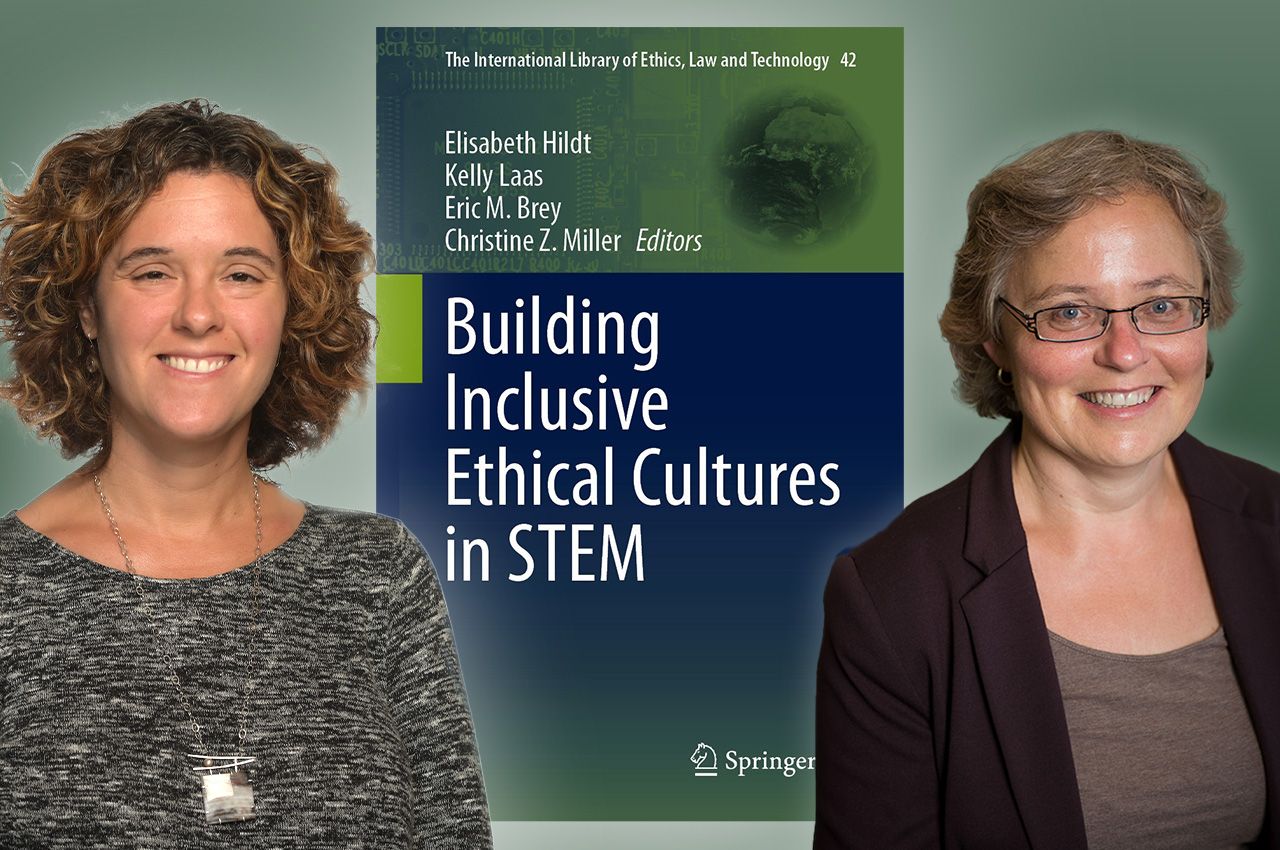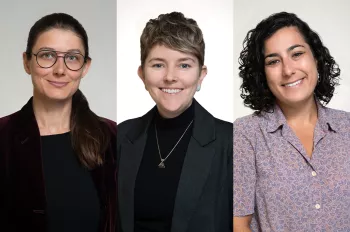Please Innovate Responsibly: New Book Examines How to Integrate Ethics into STEM

How can a culture of responsible innovation be built into a science, technology, engineering, and mathematics (STEM) degree?
For Illinois Institute of Technology Professor of Philosophy Elisabeth Hildt and Kelly Laas, a librarian/researcher at the university’s Center for Study of Ethics in the Professions, finding answers to that question began in 2016 when they received a four-year, $335,000 National Science Foundation grant that aimed to explore how to positively influence graduate student researchers’ understanding of ethical research and practice issues, enhance their handling of these issues, and promote an ethical culture in their respective labs and across campus.
Eight years and 38 co-authors from all around the globe later, Hildt and Laas published, in February 2024, their findings in a book titled Building Inclusive Ethical Cultures in STEM.
Inspired to publish the findings from a two-day workshop they held in April 2021 on innovative ethics education approaches in STEM, the book aims to share innovative approaches and frameworks to address various ethical issues in a way that can form the backbone for creating or improving a STEM ethics education.
Among the questions asked include: What can researchers do to build more inclusive research environments? How can meaningful discussions about ethics be effectively integrated into STEM courses, research labs, and workplace environments? How can STEM ethics education be improved?
“Whenever we want to build up an elaborated ethics education at Illinois Tech, we can basically open this book,” says Hildt, who serves as director of the Center for Study of Ethics in the Professions. “We can go through those chapters, think about what fits for us, what we could try, what may not be useful, map the relevant pages, and think about how to create a module or course with that approach.”
The final result? A compilation of techniques and strategies from researchers representing a wide range of perspectives from around the world.
“It’s what makes the book valuable in a lot of ways,” Laas says of the variety of perspectives. “It was really wonderful to hear from individuals from India, China, Africa, and think about how they integrate ethics into their work and how they begin teaching their students about it.”
While the strategies for integrating a culture of ethics into STEM education may be relatively new, Laas and Hildt point out that the need to have strong ethics within a STEM curriculum has always been important when it comes to how a researcher’s work may impact society.
In particular, Laas points to a phenomenon that many of us develop when we become hyper-focused on any project: tunnel vision.
“Sometimes it’s easy to lose the forest from the trees,” says Laas. “You get so involved in what you’re doing, you fail to make the connections between what I’m developing and how it’s going to affect the outside world. We can get this tunnel vision—all of us can—and one of the things ethics does is help make those connections between what I’m doing in the lab and when it goes out into the world.”
A significant focus was on finding approaches that better involve students.
The book often highlights values and integrating ethical thinking into whatever research a student may be interested in, rather than implementing concrete rules that may already be out of date for rapidly developing new technologies.
“There’s a need for teaching approaches, for educational approaches that better involve students, that are more motivating and more positive and that don’t think of ethics like, ‘A, B, and C are forbidden, so that’s why you shouldn’t do A, B, and C,’ and more thinking about what is a good way of doing your research,” Hildt says. “What are the implications of your research? What are the societal aspects? How can your research lab be more inclusive?
“There’s a need for innovative approaches, and I think our book is right in that direction.”




